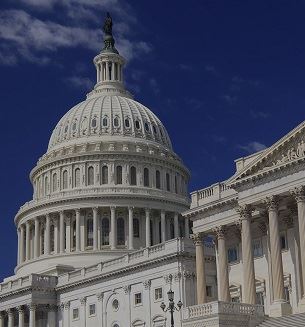Debunking the Process of Federal Appeals: What You Need to Know
Browsing the detailed realm of federal allures can often appear like going across uncharted waters for those strange with the procedure. Understanding the nuances of appellate court territory, the complexities of submitting a notification of charm, presenting a compelling short, and making a persuasive dental disagreement are important components that can considerably impact the outcome of a case. By unwinding the layers of intricacy bordering government appeals, people can gain a clearer understanding right into the devices that regulate this critical point of the lawful system.
Comprehending Federal Appeals Process
Looking into the intricate realm of the federal charms procedure introduces a organized and systematic trip with the judicial system - federal appeal lawyers iowa. Federal allures serve as a critical device for reviewing decisions made by reduced courts. Understanding this process is important for anybody included in legal procedures at the federal degree
The process typically begins with a party dissatisfied with a reduced court's ruling submitting a notification of appeal. This causes a testimonial by a higher court, where a panel of judges evaluates the lawful debates presented by both events. Briefs describing the lawful reasoning behind each party's setting are submitted, and oral disagreements might be heard to make clear complex issues.
The appellate court's decision is based on a detailed assessment of the reduced court's procedures and the debates provided. Once the appellate court gets to a decision, it can attest, turn around, remand, or customize the reduced court's ruling, providing clearness and finality to the legal dispute.
Appellate Court Jurisdiction Described

Appellate courts have territory over certain sorts of situations, commonly those including legal errors, step-by-step problems, or inquiries of legislation instead than valid conflicts. The territory of appellate courts is normally detailed in statutes and legislations that regulate the court system. Recognizing appellate court jurisdiction is vital for events associated with the allures process as it identifies whether an instance is qualified for evaluation and the degree to which the appellate court can intervene in the lower court's decision.
Declaring a Notification of Charm
The first step in commencing the federal allures procedure includes filing a Notice of Appeal with the proper appellate court. wisconsin federal appeal attorneys. This critical file formally alerts the court and the other celebrations associated with the case that the appealing celebration intends to look for an evaluation of the lower court's decision. Submitting a Notice of Appeal is a stringent procedural requirement that sets the appellate process moving
When preparing the Notice of Allure, it is important to make certain compliance with the specific policies and standards of the pertinent appellate court. The paper must commonly consist of details such as the situation name, the lower court's name, the date of the judgment being appealed, and a succinct declaration showing the premises for the allure.
Timeliness is of the significance when submitting a Notification of Charm. Missing out on the deadline for sending this document can lead to the appeal being dismissed, emphasizing the importance of prompt and exact initiation of the allures process. It is a good idea to seek legal guidance to navigate the complexities of submitting a Notification of Charm successfully.
Briefing and Dental Argument
In the appellate process, providing written briefs and engaging in oral arguments play critical duties in advocating for the appealing event's setting prior to the appellate court. Briefs are thorough legal files that lay out the events' arguments, legal authorities, and analysis sustaining their settings. These composed submissions offer the court with a comprehensive understanding of the facts of the instance, the relevant law, and why the appealing event believes the lower court's decision must be rescinded.
Complying with the submission and testimonial of the briefs, dental arguments use the parties an opportunity to further clarify their placements, address any concerns the appellate judges might have, and emphasize crucial points from their created briefs. Dental debates are a possibility for the attorneys to encourage the courts through verbal advocacy and actions to inquiries from the bench.

Getting the Appellate Court Decision

Conclusion
In verdict, the federal appeals procedure is a facility however critical step in looking for justice. Recognizing the appellate court jurisdiction, submitting a notification of allure, preparing briefs, and offering oral arguments are all vital components of this process. Inevitably, getting the appellate court choice can provide clarity and resolution to lawful conflicts. It is very important to navigate the federal allures procedure with diligence and focus to detail to accomplish a reasonable end result.
As we advance from comprehending the government allures procedure to studying the intricacies of appellate court jurisdiction, a basic aspect comes to light relating to the authority and restrictions of these greater courts in the lawful landscape. Appellate court territory refers to the scope of situations that a specific appellate court has the power to review and determine upon. Unlike test courts that listen to instances for the very first time, appellate courts are limited to evaluating choices made by reduced courts. Comprehending appellate court jurisdiction is important for celebrations included in the appeals process as it identifies whether a situation is eligible for testimonial and the degree to which the appellate court can interfere in the lower court's decision.
Whether the appellate court verifies, reverses, or remands the reduced court's choice, understanding the implications of the judgment is critical for all celebrations entailed in the appellate process.